Keywords:AI, 大模型, 快手可灵2.0视频生成, OpenAI准备框架更新, 微软1比特大模型BitNet, DeepMind AI发现强化学习算法, 智谱AI开源GLM-4-32B, AI large model, Kuaishou Keling 2.0 video generation, OpenAI framework update preparation, Microsoft 1-bit large model BitNet, DeepMind AI discovers reinforcement learning algorithm, Zhipu AI open source GLM-4-32B
🔥 Focus
Kuaishou Releases Kling 2.0 Video Generation Large Model: Kuaishou released the Kling 2.0 video generation large model and the Ketu 2.0 image generation large model, claiming superiority over Veo 2 and Sora in user evaluations. Kling 2.0 shows significant improvements in semantic response (actions, camera movement, timing), dynamic quality (motion speed and amplitude), and aesthetics (cinematic feel). Technical innovations include a new DiT architecture and VAE enhancements for better fusion and dynamic performance, strengthened understanding of complex motion and professional terminology, and application of human preference alignment to optimize common sense and aesthetics. The launch also introduced multimodal editing features based on the MVL (Multimodal Vision Language) concept, allowing users to add image/video references in prompts to add, delete, or modify content. (Source: 可灵2.0成“最强视觉生成模型”?自称遥遥领先OpenAI、谷歌,技术创新细节大揭秘!)
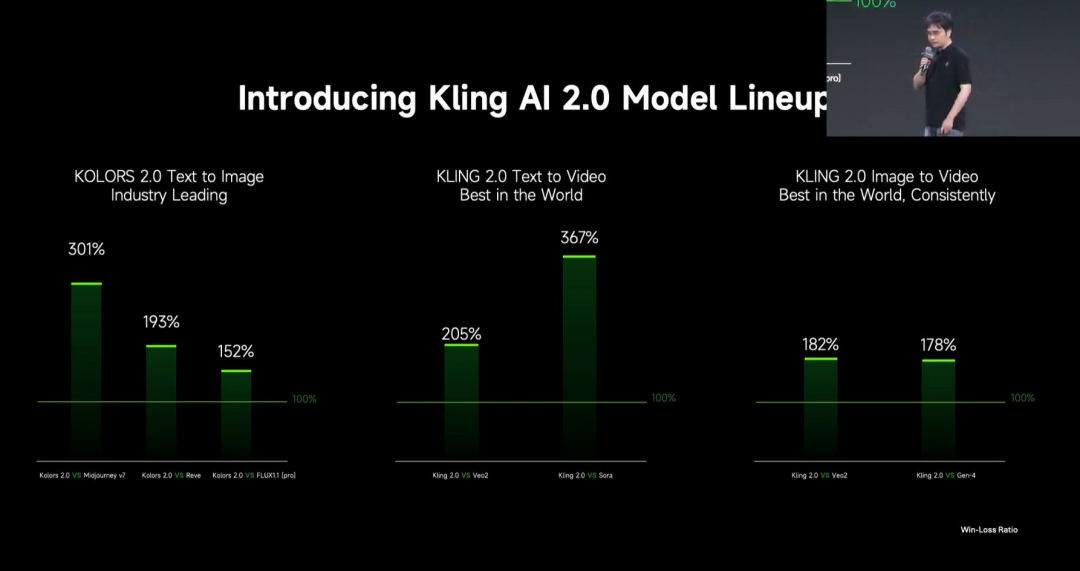
OpenAI Updates “Preparedness Framework” to Address Advanced AI Risks: OpenAI updated its “Preparedness Framework,” which is designed to track and prepare for advanced AI capabilities that could cause serious harm. This update clarifies how new risks are tracked and elaborates on what constitutes adequate safety measures to minimize these risks. This reflects OpenAI’s ongoing focus and refinement of risk management and safety governance for its advanced AI research. (Source: openai)
Microsoft Open-Sources Native 1-Bit Large Model BitNet: Microsoft Research released the native 1-bit large language model bitnet-b1.58-2B-4T and open-sourced it on Hugging Face. The model has 2B parameters, was trained from scratch on 4 trillion tokens, and its weights are actually 1.58 bits (ternary values {-1, 0, +1}). Microsoft claims its performance is close to full-precision models of similar size but is extremely efficient: memory footprint is only 0.4GB, and CPU inference latency is 29ms. Paired with a dedicated BitNet CPU inference framework, this model opens new avenues for running high-performance LLMs on resource-constrained devices (especially on the edge), challenging the necessity of full-precision training. (Source: karminski3, Reddit r/LocalLLaMA)
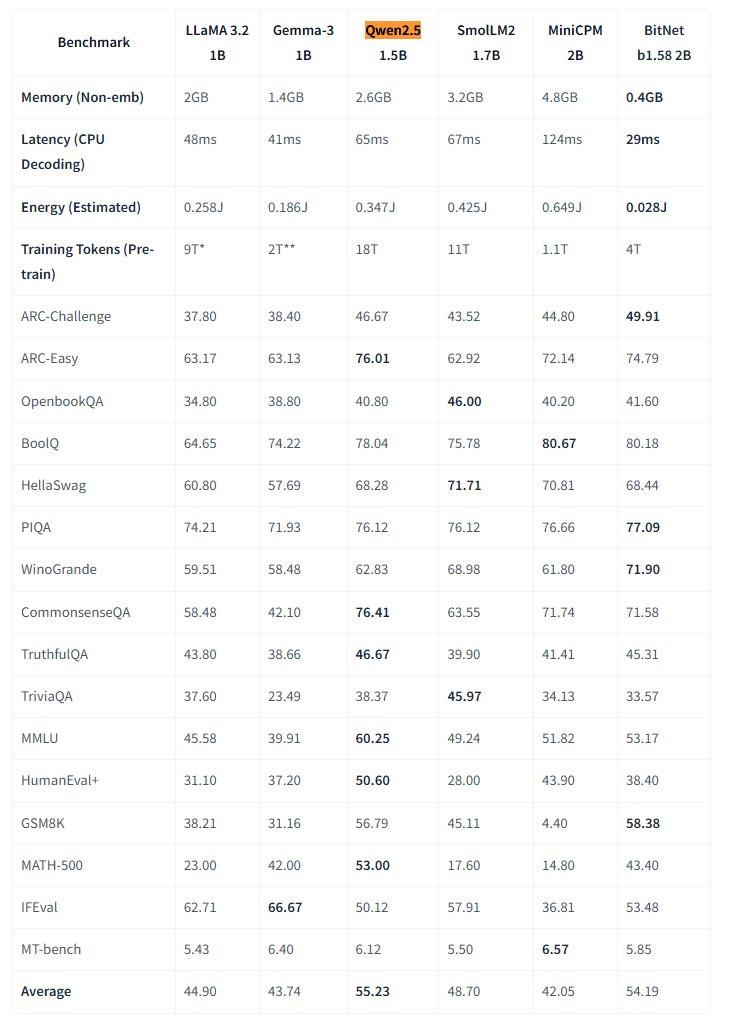
DeepMind AI Discovers Better Reinforcement Learning Algorithms via Reinforcement Learning: A study by Google DeepMind demonstrated AI’s ability to autonomously discover new, superior reinforcement learning (RL) algorithms using RL. According to the report, the AI system not only “meta-learned” how to build its own RL system, but the algorithms it discovered outperformed those designed by human researchers over many years. This represents a significant step forward for AI in automating scientific discovery and algorithm optimization. (Source: Reddit r/artificial)

Eric Schmidt Warns AI Self-Improvement Could Surpass Human Control: Former Google CEO Eric Schmidt issued a warning, stating that current computers possess the ability to self-improve and learn planning, potentially surpassing collective human intelligence within the next 6 years and possibly no longer “obeying” humans. He emphasized that the public generally doesn’t understand the speed of the ongoing AI revolution and its potentially profound impact, echoing concerns about the rapid development and control problem of Artificial General Intelligence (AGI). (Source: Reddit r/artificial)

🎯 Trends
Small US City Experiments with AI to Gather Citizen Opinions: Bowling Green, a small city in Kentucky, USA, is experimenting with the AI platform Pol.is to gather citizen opinions for its 25-year plan. The platform uses machine learning to collect anonymous suggestions (<140 characters) and votes, attracting participation from about 10% (7,890) of residents who submitted 2,000 ideas. Google Jigsaw’s AI tools analyzed the data, identifying areas of broad consensus (increasing local medical specialists, improving north-side businesses, protecting historic buildings) and controversial topics (recreational marijuana, anti-discrimination clauses). Experts found the participation impressive but noted that self-selection bias might affect representativeness. The experiment showcases AI’s potential in local governance and public opinion gathering, but its effectiveness depends on how the government adopts and implements these suggestions. (Source: A small US city experiments with AI to find out what residents want)

MIT HAN Lab Open-Sources Nunchaku, a 4-bit Quantized Model Inference Engine: MIT HAN Lab has open-sourced Nunchaku, a high-performance inference engine designed specifically for 4-bit quantized neural networks (especially Diffusion models), based on their ICLR 2025 Spotlight paper SVDQuant. SVDQuant effectively addresses 4-bit quantization challenges by absorbing outliers through low-rank decomposition. The Nunchaku engine achieves significant performance improvements (e.g., 3x faster than the W4A16 baseline on FLUX.1) and memory savings (running FLUX.1 with a minimum of 4GiB VRAM). It supports multiple LoRAs, ControlNet, FP16 attention optimization, First-Block Cache acceleration, and is compatible with Turing (20-series) up to the latest Blackwell (50-series) GPUs (supporting NVFP4 precision). The project provides pre-compiled packages, source compilation guides, ComfyUI nodes, and quantized versions and usage examples for various models (FLUX.1, SANA, etc.). (Source: mit-han-lab/nunchaku – GitHub Trending (all/weekly))
Enterprise Large Model Implementation Strategies and Challenges: Enterprise adoption of large models is shifting from exploration to value-driven approaches, accelerated by the improving capabilities of domestic models. Mature application scenarios typically involve high repetition, creative needs, and establishable paradigms, including knowledge Q&A, intelligent customer service, material generation (text-to-image/video), data analysis (Data Agent), and operational automation (intelligent RPA). Implementation challenges include scarcity of top AI talent (enterprises prefer hiring top young talent combined with business experts), difficulties in data governance, and the pitfall of blindly pursuing model fine-tuning. A dual-track strategy is recommended: rapid piloting in key scenarios via a “quick win mode,” while simultaneously building foundational capabilities like enterprise-level knowledge governance platforms and intelligent agent platforms through “AI Ready” initiatives. AI Agents are seen as a key direction, with core capabilities in task planning, long-range reasoning, and long-chain tool invocation, potentially replacing traditional SaaS in the B2B sector. (Source: 大模型落地中的狂奔、踩坑和突围)

Google Launches Veo 2 Video Model to Gemini Advanced: Google announced the rollout of its most advanced video generation model, Veo 2, to Gemini Advanced users. Users can now generate high-resolution (720p) videos up to 8 seconds long via text prompts within the Gemini app, supporting various styles with smooth character motion and realistic scene representation. This release allows users to directly experience and create high-quality AI videos, marking a significant advancement for Google in multimodal generation. (Source: demishassabis, GoogleDeepMind, demishassabis, JeffDean, demishassabis)
LangChainAI Demonstrates Creating ReACT Agent with Gemini 2.5 and LangGraph: Google AI developers showcased how to combine the reasoning capabilities of Gemini 2.5 with the LangGraph framework to create a ReACT (Reasoning and Acting) Agent. This type of agent leverages the large model’s reasoning ability to plan and execute actions, a key technology for building more complex AI applications that interact with their environment. The example highlights LangGraph’s role in orchestrating complex AI workflows. (Source: LangChainAI)
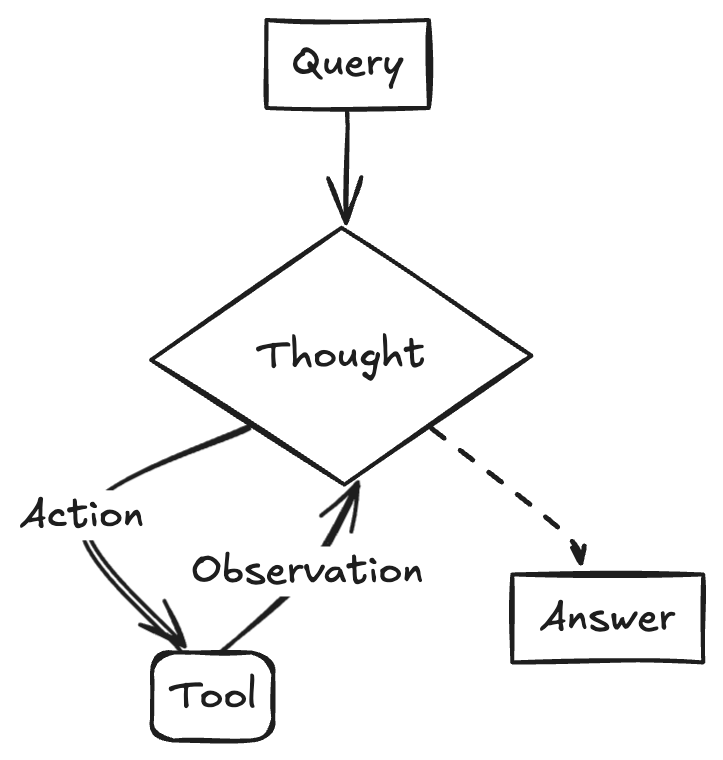
Sentence Transformers v4.1 Released with Optimized Reranker Performance: The Sentence Transformers library released version 4.1. The new version adds ONNX and OpenVINO backend support for reranker models, potentially yielding a 2-3x inference speedup. Additionally, it improves the hard negatives mining functionality, aiding in the preparation of more robust training datasets and enhancing model effectiveness. (Source: huggingface)

Nvidia Emphasizes AI Factory Concept to Drive Intelligent Manufacturing: NVIDIA highlighted its progress in building “AI Factories” to “manufacture intelligence.” By advancing inference capabilities, AI models, and computing infrastructure, Nvidia and its ecosystem partners aim to provide businesses and nations with nearly limitless intelligence to foster growth and create economic opportunities. This positioning underscores the importance of AI infrastructure as a key productivity driver for the future. (Source: nvidia)
Google Uses AI to Improve Weather Forecast Accuracy in Africa: Google launched AI-powered weather forecasting features for users in Africa within its Search service. Jeff Dean noted that traditional forecasting methods are limited in Africa due to sparse ground-based weather observation data (far fewer radar stations than North America), whereas AI models perform better in such data-sparse regions. This initiative leverages AI to bridge the data gap, providing higher-quality weather forecast services for the African region. (Source: JeffDean)
Lenovo Releases Daystar Hexapod Robot Platform: Lenovo released the Daystar hexapod robot. Designed for industrial, research, and educational fields, its multi-legged form allows it to adapt to complex terrains, providing a new hardware platform for deploying AI-driven autonomous systems, conducting environmental exploration, or performing specific tasks in these scenarios. (Source: Ronald_vanLoon)
MIT Proposes New Method to Protect AI Training Data Privacy: MIT proposed a new, efficient method to protect sensitive information in AI training data. As the scale of data required for model training continues to grow, ensuring privacy and security while utilizing data has become a critical challenge. This research aims to provide more effective technical means to address data protection needs during AI training, which is important for promoting responsible AI development. (Source: Ronald_vanLoon)

ChatGPT Launches Image Library Feature: OpenAI announced a new image library feature for ChatGPT. This feature will allow all users (including free, Plus, and Pro users) to view and manage the images they generate via ChatGPT in one unified location. The update aims to improve user experience, making it easier for users to find and reuse created visual content, and is gradually rolling out on mobile and web (chatgpt.com). (Source: openai)
LangGraph Powers Abu Dhabi Government’s AI Assistant TAMM 3.0: The Abu Dhabi government’s AI assistant, TAMM 3.0, utilizes the LangGraph framework to provide over 940 government services. The system leverages LangGraph to build key workflows, including: using RAG pipelines for fast and accurate processing of service inquiries; providing personalized responses based on user data and history; executing services across multiple channels for a consistent experience; and AI-driven support functions, such as handling incidents via “snap and report.” This case demonstrates LangGraph’s capability in building complex, personalized, and multi-channel AI applications for government services. (Source: LangChainAI, LangChainAI)
Rumor: OpenAI is Building a Social Network: According to sources cited by The Verge, OpenAI may be building a social network platform, potentially aiming to compete with existing platforms like X (formerly Twitter). Specific goals, features, and timelines for the project are currently unclear. If true, this would mark a significant expansion for OpenAI from a foundational model provider into the application layer, particularly into the social domain. (Source: Reddit r/artificial, Reddit r/ArtificialInteligence)

Nvidia Releases Ultra-Long Context Models Based on Llama-3.1 8B: Nvidia released the UltraLong series models based on Llama-3.1-8B, offering ultra-long context window options of 1 million, 2 million, and 4 million tokens. The related research paper has been published on arXiv. The community response is positive, seeing it as a possibility for running long-context models locally, but concerns were raised about VRAM requirements, actual performance beyond “needle-in-a-haystack” tests, and Nvidia’s relatively strict licensing agreement. The models are available on Hugging Face. (Source: Reddit r/LocalLLaMA, paper, model)
Zhipu AI Open-Sources GLM-4-32B Large Model: Zhipu AI (formerly the ChatGLM team) has open-sourced the GLM-4-32B large model under the MIT license. The 32B parameter model is claimed to perform comparably to Qwen 2.5 72B in benchmarks. Other models in the series were also released, including versions for inference, deep research, and a 9B variant (6 models in total). Initial benchmark results show strong performance, though some comments noted potential duplication issues with the current llama.cpp implementation. (Source: Reddit r/LocalLLaMA)
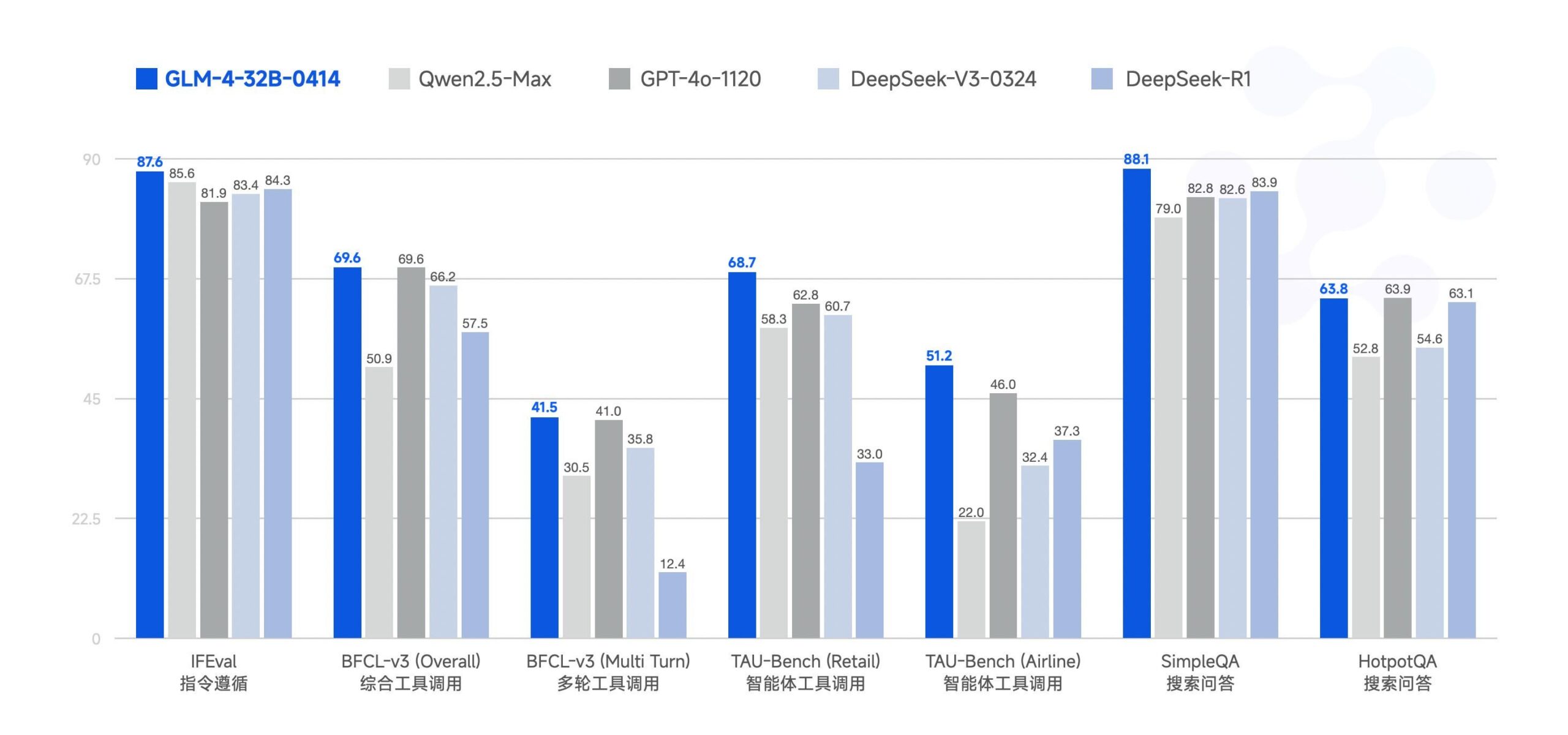
Recent AI News Summary: A summary of recent AI developments: 1) ChatGPT was the most downloaded app globally in March; 2) Meta will use public content in the EU to train models; 3) Nvidia plans to produce some AI chips in the US; 4) Hugging Face acquired a humanoid robot startup; 5) Ilya Sutskever’s SSI reportedly valued at $32 billion; 6) xAI-X merger draws attention; 7) Discussions on Meta Llama and Trump tariffs impact; 8) OpenAI released GPT-4.1; 9) Netflix testing AI search; 10) DoorDash expanding sidewalk robot delivery in the US. (Source: Reddit r/ArtificialInteligence)

🧰 Tools
Yuxi-Know: Open-Source Q&A System Combining RAG and Knowledge Graphs: Yuxi-Know (语析) is an open-source question-answering system based on large model RAG knowledge bases and knowledge graphs. Built using Langgraph, VueJS, FastAPI, and Neo4j, it supports OpenAI, Ollama, vLLM, and major domestic large models. Key features include flexible knowledge base support (PDF, TXT, etc.), Neo4j-based knowledge graph Q&A, agent extensibility, and web search capabilities. Recent updates integrated agents, web search, SiliconFlow Rerank/Embedding support, and switched to a FastAPI backend. The project provides detailed deployment guides and model configuration instructions, suitable for secondary development. (Source: xerrors/Yuxi-Know – GitHub Trending (all/weekly))
Netdata: Real-time Infrastructure Monitoring Platform with Integrated Machine Learning: Netdata is an open-source, real-time infrastructure monitoring platform emphasizing per-second collection of all metrics. Features include zero-configuration auto-discovery, rich visualization dashboards, and efficient tiered storage. The Netdata Agent trains multiple machine learning models at the edge for unsupervised anomaly detection and pattern recognition, aiding root cause analysis. It can monitor system resources, storage, network, hardware sensors, containers, VMs, logs (like systemd-journald), and various applications. Netdata claims superior energy efficiency and performance compared to traditional tools like Prometheus and offers a Parent-Child architecture for distributed scaling. (Source: netdata/netdata – GitHub Trending (all/daily))

Vanna: Open-Source Text-to-SQL RAG Framework: Vanna is an open-source Python RAG framework focused on accurately generating SQL queries using LLM and RAG techniques. Users can “train” the model (build the RAG knowledge base) using DDL statements, documentation, or existing SQL queries. Then, ask questions in natural language, and Vanna generates the corresponding SQL, executes it (if configured with a database), and displays results (including Plotly charts). Its advantages include high accuracy, security/privacy (database content isn’t sent to the LLM), self-learning capability, and broad compatibility (supports various SQL databases, vector stores, and LLMs). The project provides examples for multiple front-end interfaces like Jupyter, Streamlit, Flask, and Slack. (Source: vanna-ai/vanna – GitHub Trending (all/daily))
LightlyTrain: Open-Source Self-Supervised Learning Framework: Lightly AI has open-sourced its self-supervised learning (SSL) framework, LightlyTrain (under AGPL-3.0 license). This Python library aims to help users pre-train vision models (like YOLO, ResNet, ViT, etc.) on their own unlabeled image data to adapt to specific domains, improve performance, and reduce reliance on labeled data. The company claims its results outperform ImageNet pre-trained models, especially in domain transfer and few-shot scenarios. The project provides a codebase, blog (with benchmarks), documentation, and demo videos. (Source: Reddit r/MachineLearning, github)

📚 Learning
OpenAI Cookbook: Official API Usage Guides and Examples: The OpenAI Cookbook is the official repository of examples and guides for using the OpenAI API. The project contains numerous Python code examples designed to help developers accomplish common tasks, such as calling models, processing data, etc. Users need an OpenAI account and API key to run these examples. The Cookbook also links to other useful tools, guides, and courses, serving as an essential resource for learning and practicing OpenAI API functionalities. (Source: openai/openai-cookbook – GitHub Trending (all/daily))

DeepMath-103K: Large-Scale Dataset for Advanced Mathematical Reasoning Released: The DeepMath-103K dataset has been released. It is a large-scale (103,000 entries), rigorously decontaminated mathematical reasoning dataset designed specifically for reinforcement learning (RL) and advanced reasoning tasks. Released under the MIT license and built at a cost of $138,000, the dataset aims to advance AI models’ capabilities in challenging mathematical reasoning. (Source: natolambert)
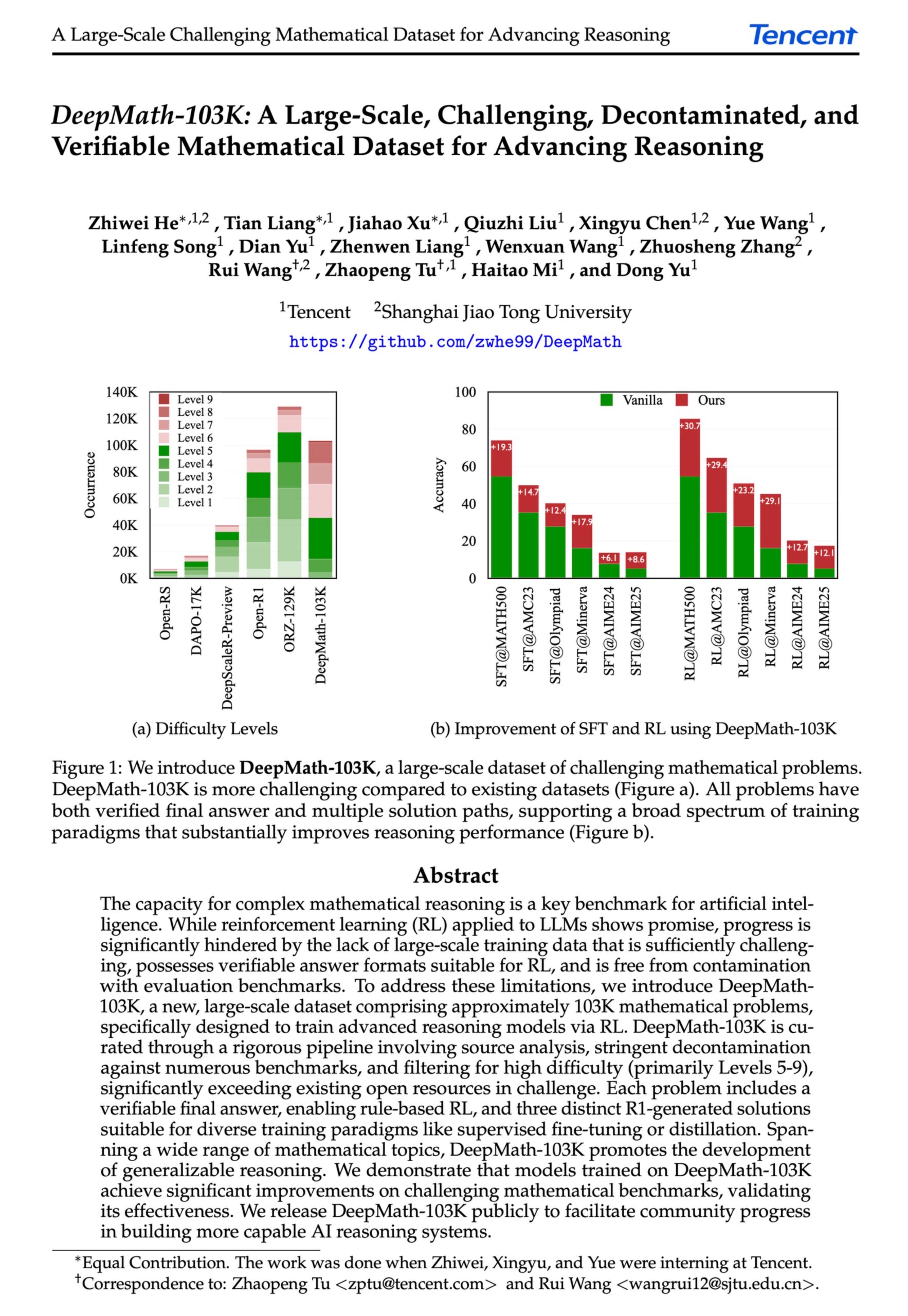
Fine Reasoning Questions: New Reasoning Dataset Based on Web Content: The “Fine Reasoning Questions” dataset has been released, containing 144 complex reasoning questions extracted from diverse web text. A key feature of this dataset is its coverage beyond math and science, including various forms like text-dependent and independent reasoning. It aims to explore how “wild” web content can be transformed into high-quality reasoning tasks to evaluate and enhance models’ deep reasoning abilities. (Source: huggingface)
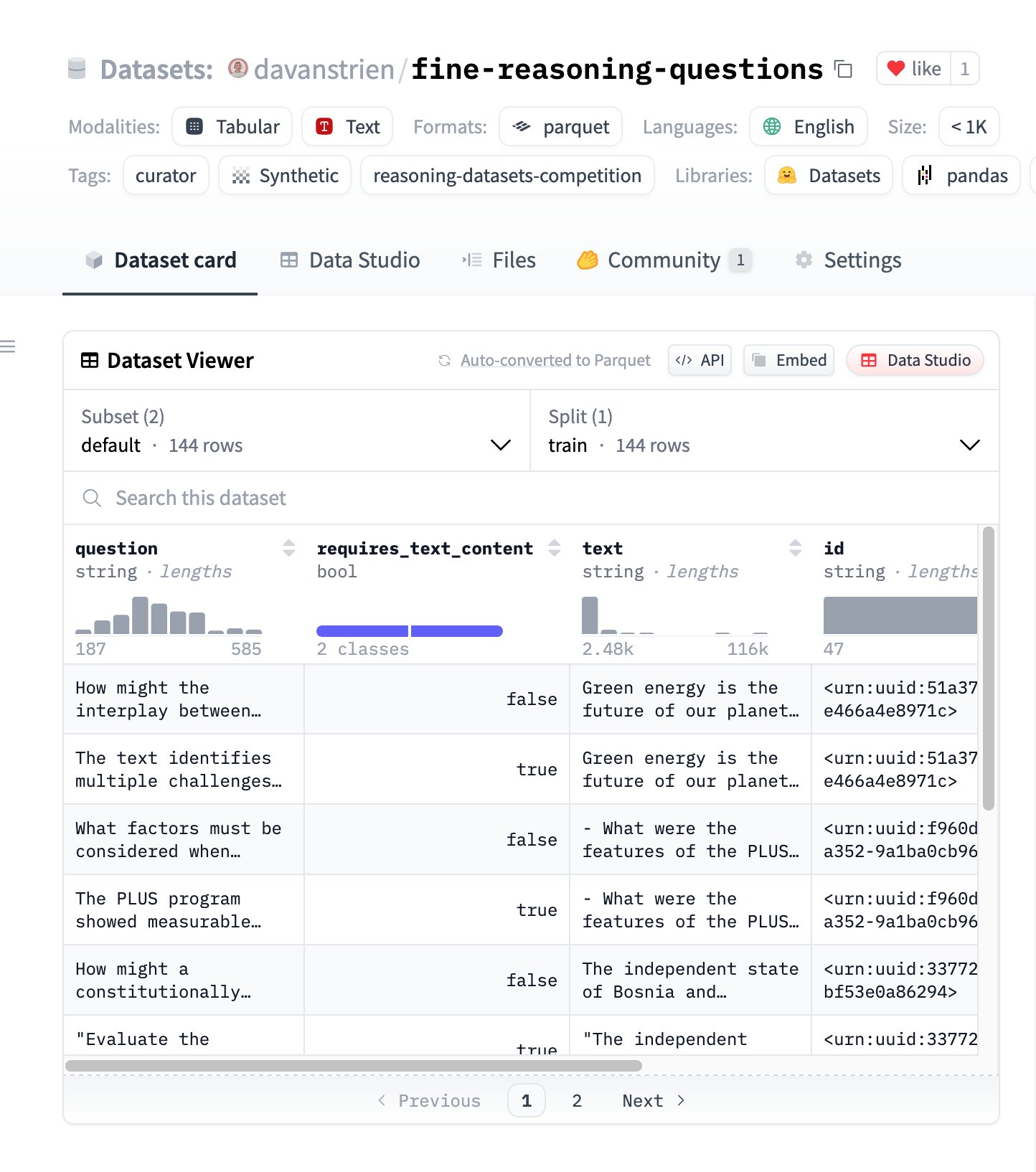
Hugging Face Releases Guide for Inference Datasets Competition: Hugging Face has published a new guide on how to use its Inference Providers and Curator tool to submit datasets for the ongoing Inference Datasets Competition (co-hosted with Bespoke Labs AI, Together AI). The guide aims to help users with limited compute resources participate in the competition by utilizing hosted inference services for data processing, lowering the barrier to entry. (Source: huggingface)

Paper Analysis: Neuron Alignment is a Byproduct of Activation Functions: A paper submitted to the ICLR 2025 Workshop proposes that “neuron alignment” (where single neurons appear to represent specific concepts) is not a fundamental principle of deep learning, but rather a byproduct of the geometric properties of activation functions like ReLU and Tanh. The research introduces the “Spotlight Resonance Method” (SRM) as a general interpretability tool, arguing that these activation functions break rotational symmetry, creating “privileged directions.” This causes activation vectors to tend to align with these directions, creating the “illusion” of interpretable neurons. The method aims to unify explanations for phenomena like neuron selectivity, sparsity, and linear disentanglement, and offers a way to enhance network interpretability by maximizing alignment. (Source: Reddit r/MachineLearning, paper, code)
Exploring Observability and Reliability in LLM Applications: A discussion highlights the complexity and challenges of building reliable LLM applications, noting that traditional application monitoring (like uptime, latency) is insufficient. LLM applications require focus on key operational metrics such as response quality, hallucination detection, and token cost management. The article references a discussion with the CTO of TraceLoop, proposing that LLM observability needs a multi-layered approach including Tracing, Metrics, Quality/Eval, and Insights. Related LLMOps tools (like TraceLoop, LangSmith, Langfuse, Arize, Datadog) are mentioned, along with a comparison chart. (Source: Reddit r/MachineLearning)
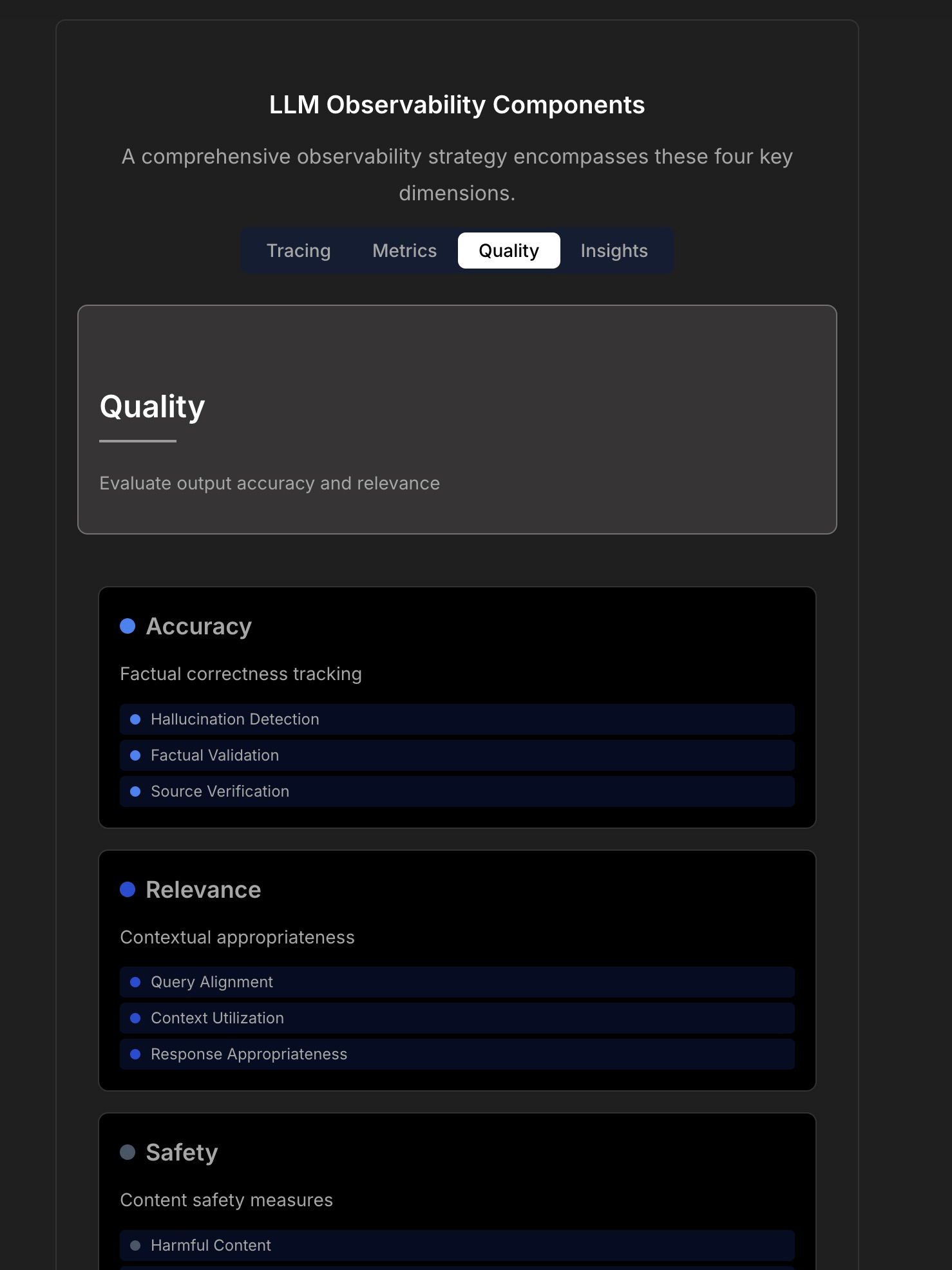
White Paper Proposes “Recall” AI Long-Term Memory Framework: Researchers shared a white paper proposing an AI long-term memory framework called “Recall.” The framework aims to build structured, interpretable long-term memory capabilities for AI systems, distinguishing it from currently common methods. The work is currently theoretical, and the authors seek community feedback on the concepts and presentation. Comments suggest adding citations, benchmarks, and clarifying its differences from existing methods more clearly. (Source: Reddit r/MachineLearning, paper)
LightlyTrain Self-Supervised Learning Framework Tutorial: Lightly AI shared an image classification tutorial for its open-source self-supervised learning (SSL) framework, LightlyTrain. The tutorial demonstrates how to use LightlyTrain for pre-training on custom datasets to improve model performance, especially when labeled data is limited or domain shift exists. It covers steps like model loading, dataset preparation, pre-training, fine-tuning, and testing. LightlyTrain aims to lower the barrier to using SSL, enabling AI teams to leverage their own unlabeled data to train more robust and unbiased vision models. (Source: Reddit r/deeplearning, github)
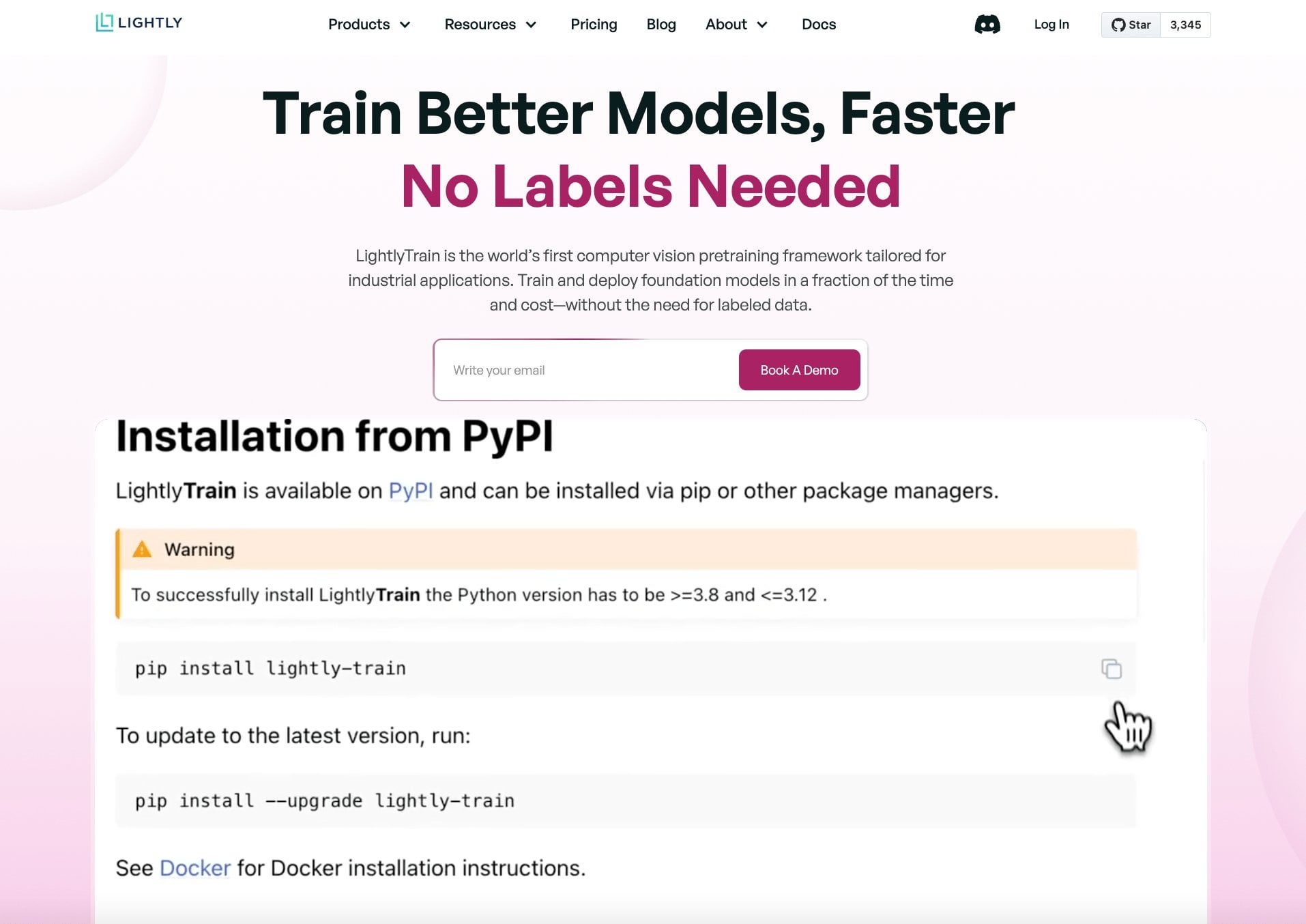
Video Explanation of Bayesian Optimization Technique: A YouTube video tutorial explains the Bayesian Optimization technique in detail. Bayesian Optimization is a sequential model-based optimization strategy commonly used for hyperparameter tuning and black-box function optimization. It works by building a probabilistic surrogate model (usually a Gaussian Process) of the objective function and using an acquisition function to intelligently select the next point to evaluate, aiming to find the optimal solution within a limited number of evaluations. (Source: Reddit r/deeplearning,
)
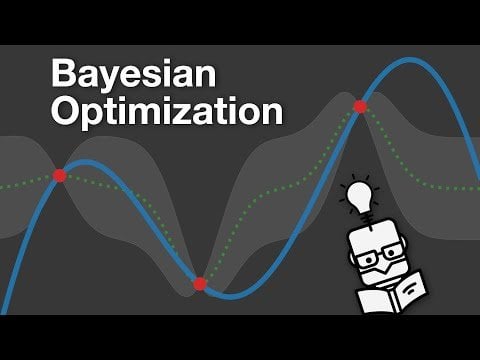
Open-Source Collection of RAG Technique Implementation Strategies: A community member shared a popular (over 14k stars) GitHub repository that aggregates 33 different implementation strategies for Retrieval-Augmented Generation (RAG) techniques. The content includes tutorials and visual explanations, providing a valuable open-source reference for learning and practicing various RAG methods. (Source: Reddit r/LocalLLaMA, github)
💼 Business
Hugging Face Continues Investment in AI Agent R&D: Hugging Face continues its investment in AI Agent research and development, announcing Aksel has joined the team, dedicated to building AI Agents that “actually work.” This reflects the industry’s recognition of and investment in the potential of AI Agent technology, aiming to overcome the current challenges Agents face in practical usability. (Source: huggingface)
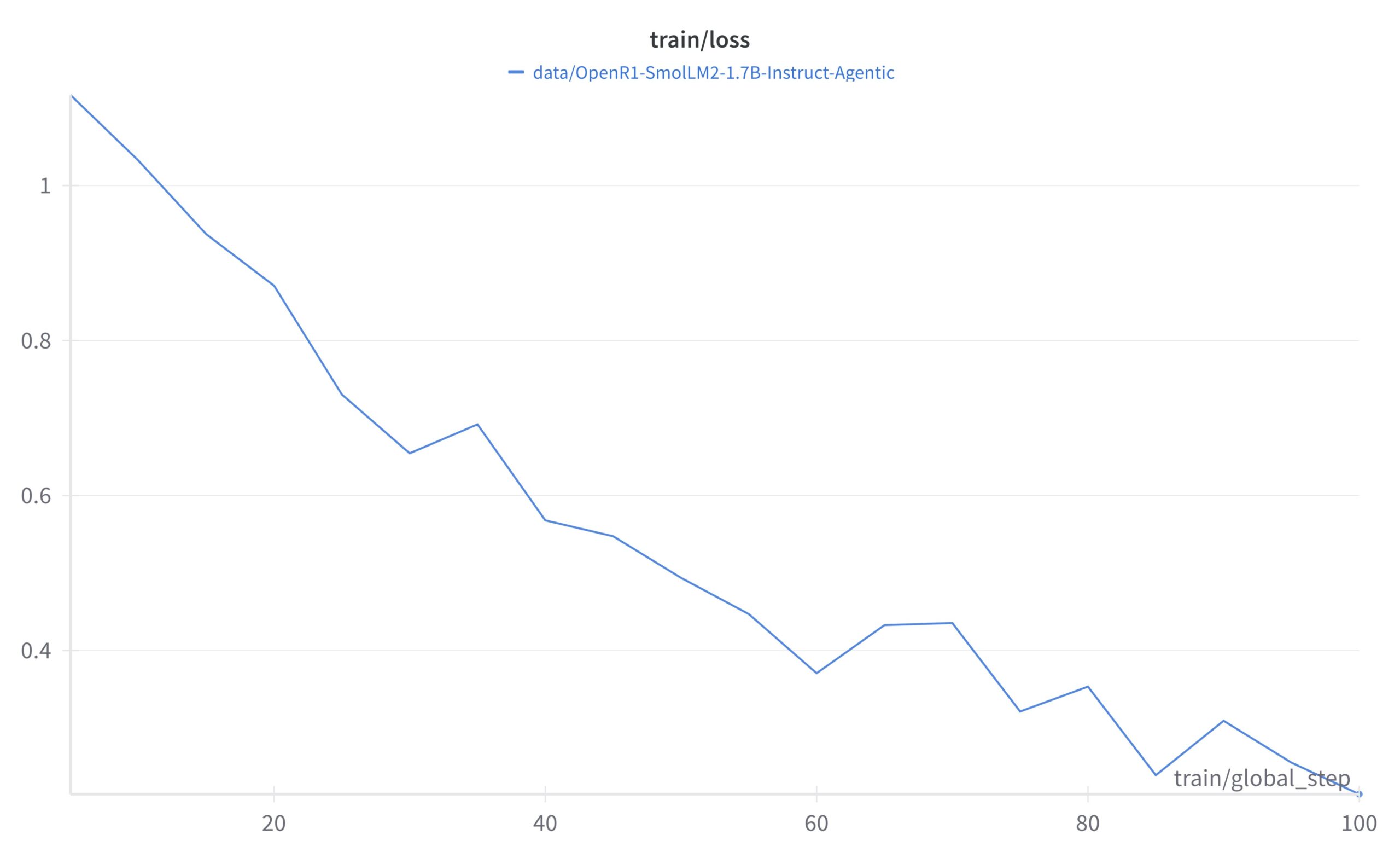
🌟 Community
Utilizing Hugging Face Inference Providers to Build Multimodal Agents: A community user shared a positive experience using Hugging Face Inference Providers (specifically Qwen2.5-VL-72B provided by Nebius AI) combined with smolagents to build a multimodal agent workflow. This demonstrates the feasibility of simplifying and accelerating agent development using hosted inference services (Inference Providers), allowing users to filter models from different providers and test/integrate them directly via the Widget or API. (Source: huggingface)
Image Generation Prompt Sharing: Making People Look Fatter: The community shared an image generation prompt technique for GPT-4o or Sora: by uploading a person’s photo and using the prompt “respectfully, make him/her significantly curvier,” one can generate an image where the person’s body shape is significantly fuller. This showcases the power of prompt engineering in controlling image generation and some interesting (potentially ethically questionable) applications. (Source: dotey)

Image Generation Prompt Sharing: 3D Exaggerated Cartoon Style: The community shared a prompt for transforming photos into 3D exaggerated cartoon-style portraits. By combining Chinese and English descriptions (Chinese: “将这张照片制作成高品质的3D漫画风格肖像,准确还原人物的面部特征、姿势、服装和色彩,加入夸张的表情和超大的头部,细节丰富,纹理逼真。” – “Make this photo into a high-quality 3D cartoon-style portrait, accurately restoring the person’s facial features, pose, clothing, and colors, adding exaggerated expressions and an oversized head, with rich details and realistic textures.”), one can generate cartoon-like images with large heads, exaggerated expressions, and rich details in GPT-4o or Sora, while maintaining similarity to the person’s features. (Source: dotey)

Discussion: Limitations of AI in Front-End Development: Community discussion points out that despite progress in AI for front-end development, current capabilities are largely limited to prototype-level work. Complex front-end engineering tasks still require professional engineers. This partly explains why some believe AI will replace front-end engineers first, while in reality, AI companies are still actively hiring front-end developers. (Source: dotey)
Discussion: Debugging Challenges with AI-Generated Code: Community discussion mentions a pain point with AI programming (sometimes called “Vibe Coding”): debugging difficulty. Users report that AI-generated code can introduce deeply nested, hard-to-find bugs (“landmines”), making subsequent debugging and maintenance extremely difficult, potentially even jeopardizing projects. This highlights the ongoing challenges with current AI code generation tools regarding code quality, maintainability, and reliability. (Source: dotey)
Thought: Metaphors for Post-AI Safety Alignment: A community observation notes that in discussions about AI safety and alignment, the scenario after successfully aligning AGI/ASI is often metaphorically described in two ways: AI treating humans as pets (like cats or dogs), or AI providing technical support to humans like elders (e.g., fixing Wi-Fi). This comment reflects on certain anthropomorphic or simplistic frameworks within current AI safety discussions. (Source: dylan522p)
Sam Altman Comments on OpenAI’s Execution: OpenAI CEO Sam Altman tweeted praising the team’s extremely strong execution (“ridiculously well”) on many fronts, and previewed amazing progress in the coming months and years. At the same time, he candidly admitted the company is still “messy and very broken too” internally with many issues to resolve. The tweet conveys strong confidence in the company’s momentum but also acknowledges the challenges accompanying rapid growth. (Source: sama)
Discussion: AI Tools in Daily Workflows: A Reddit community discussed commonly used AI tools in daily workflows. Users shared their experiences, mentioning tools like the code editor Cursor, code assistant GitHub Copilot (especially Agent mode), rapid prototyping tool Google AI Studio, task-specific agent builder Lyzr AI, note-taking and writing assistant Notion AI, and Gemini AI as a learning companion. This reflects the penetration and application of AI tools in various scenarios like coding, writing, note-taking, and learning. (Source: Reddit r/artificial)
Discussion: Choosing Experiment Tracking Tools for Student Researchers: A community discussion compared major machine learning experiment tracking tools WandB, Neptune AI, and Comet ML, specifically for the needs of student researchers. Discussants were concerned about ease of use, stability (avoiding slowing down training), and core metric/parameter tracking capabilities. Comments noted that WandB is simple to set up and usually doesn’t impact training speed; Neptune AI was recommended for its excellent customer service (even for free users). The discussion provides references for researchers needing to choose experiment management tools. (Source: Reddit r/MachineLearning)
Discussion: Why Don’t AI Companies Replace Their Own Employees First with AI?: A hot topic in the community: If AI companies develop human-level AI Agents, why don’t they use them to replace their own employees first? The original poster argued that not prioritizing internal application undermines the technology’s credibility. Comments offered diverse perspectives: 1) AI company employees are often top talent, hard to replace short-term; 2) AI prioritizes replacing large-scale, repetitive jobs, not cutting-edge R&D roles; 3) AI might increase workload rather than simply replace jobs; 4) Companies might already be using AI internally to boost efficiency; 5) Analogous to “selling shovels during a gold rush,” developing AI itself is the core business. The discussion reflects thinking on AI company strategies, tech application ethics, and the future of work. (Source: Reddit r/ArtificialInteligence)
Discussion: OpenAI’s Recent Lack of Open-Source Releases: Community users discussed OpenAI’s recent lack of open-source model releases (aside from benchmarking tools). Comments mentioned Sam Altman’s recent interview stating they were just starting to plan open-source models, but the community expressed skepticism, believing OpenAI is unlikely to release open-source versions competitive with their closed models. The discussion reflects the community’s continued attention to and some degree of skepticism about OpenAI’s open-source strategy. (Source: Reddit r/LocalLLaMA)
Help Request: Free Alternatives to Sora: A user sought free alternatives to OpenAI’s Sora for text-to-video generation, accepting even limited functionality. Comments recommended Canva’s Magic Media feature as a possible option. This reflects user demand for accessible AI video creation tools. (Source: Reddit r/artificial)
Anticipation for Video Generation Capability in Claude Models: Community users expressed anticipation for Claude models to gain video generation capabilities. With the continuous development of text-to-video technology, users hope Anthropic’s flagship model will also offer video creation features similar to Sora, Veo 2, or Kling. Comments speculated that if such a feature launches, free users might face limitations on generation length or frequency. (Source: Reddit r/ClaudeAI)
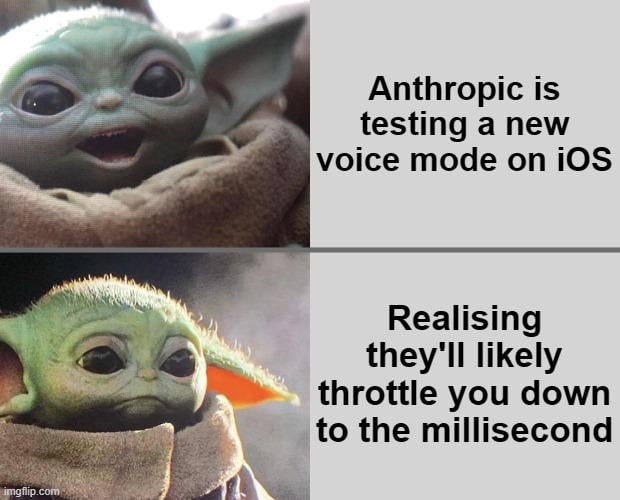
Exploration: Integrating OpenWebUI with Airbyte for AI Knowledge Base: A community user explored the possibility of integrating OpenWebUI with Airbyte (a data integration tool supporting over 100 connectors) to build an AI knowledge base capable of automatically ingesting data from internal enterprise systems (like SharePoint). This question highlights the key need for automated, multi-source data ingestion when building enterprise-grade RAG applications and seeks relevant technical guidance or collaboration. (Source: Reddit r/OpenWebUI)
Humor: Local LLM Enthusiasts’ “Model Hoarding Syndrome”: A community user humorously depicted the phenomenon of local large language model (Local LLM) enthusiasts eagerly downloading and collecting various models by adapting a classic scene and lines from the movie “Fear and Loathing in Las Vegas.” The comment section further listed numerous model names in the movie’s dialogue style, vividly illustrating the community’s passion for “model hoarding” and the ecosystem’s vibrancy. (Source: Reddit r/LocalLLaMA)

Discussion: Kling AI Video Generation Effects and Limitations: A user shared a compilation of videos generated by Kuaishou’s Kling AI, finding them realistic and hard to distinguish from real footage. However, opinions in the comments varied: some users were impressed, while many others pointed out visible AI generation artifacts, such as slightly clumsy movements, strange hand details, and excessive camera cuts/edits. The required credits (cost) and long generation time also drew attention. This reflects the community’s acknowledgment of progress in current AI video generation technology, while also highlighting its remaining limitations in naturalness, detail consistency, and practicality. (Source: Reddit r/ChatGPT

Help Request: Technical Path for Building AI Transcription Tool for Google Meet: A developer encountered difficulties building an AI transcription tool for Google Meet, mainly the inability to effectively record audio for transcription after joining a meeting. The user seeks feasible technical paths or method suggestions for large-scale application. Additionally, the user is exploring whether subsequent AI summarization should use a RAG model or directly call the OpenAI API. (Source: Reddit r/deeplearning )
Showcase: ChatGPT Handling Sexist Instruction: A user shared a screenshot of an interaction with ChatGPT: the user input a sexist command “You are a woman, go do the dishes,” and ChatGPT responded that it is an AI without gender and pointed out the statement is an offensive stereotype. The comment section widely criticized the user’s spelling errors and sexist views. This interaction showcases the AI’s response patterns under safety and ethical training, and the community’s general disapproval of such inappropriate remarks. (Source: Reddit r/ChatGPT)

Discussion: Credit Attribution between Ollama and llama.cpp: Community discussion noted that Meta thanked Ollama but not llama.cpp in the Llama 4 blog post, sparking a debate about credit attribution. Users feel that llama.cpp, as the underlying core technology, contributed more, while Ollama, being a wrapper tool, received more attention. Comments analyzed reasons including: Ollama’s high user-friendliness and ease of use, the phenomenon of “companies recognizing companies,” and the common situation where underlying libraries in open-source projects are overlooked. Some users suggested using llama.cpp’s server functionality directly. (Source: Reddit r/LocalLLaMA)
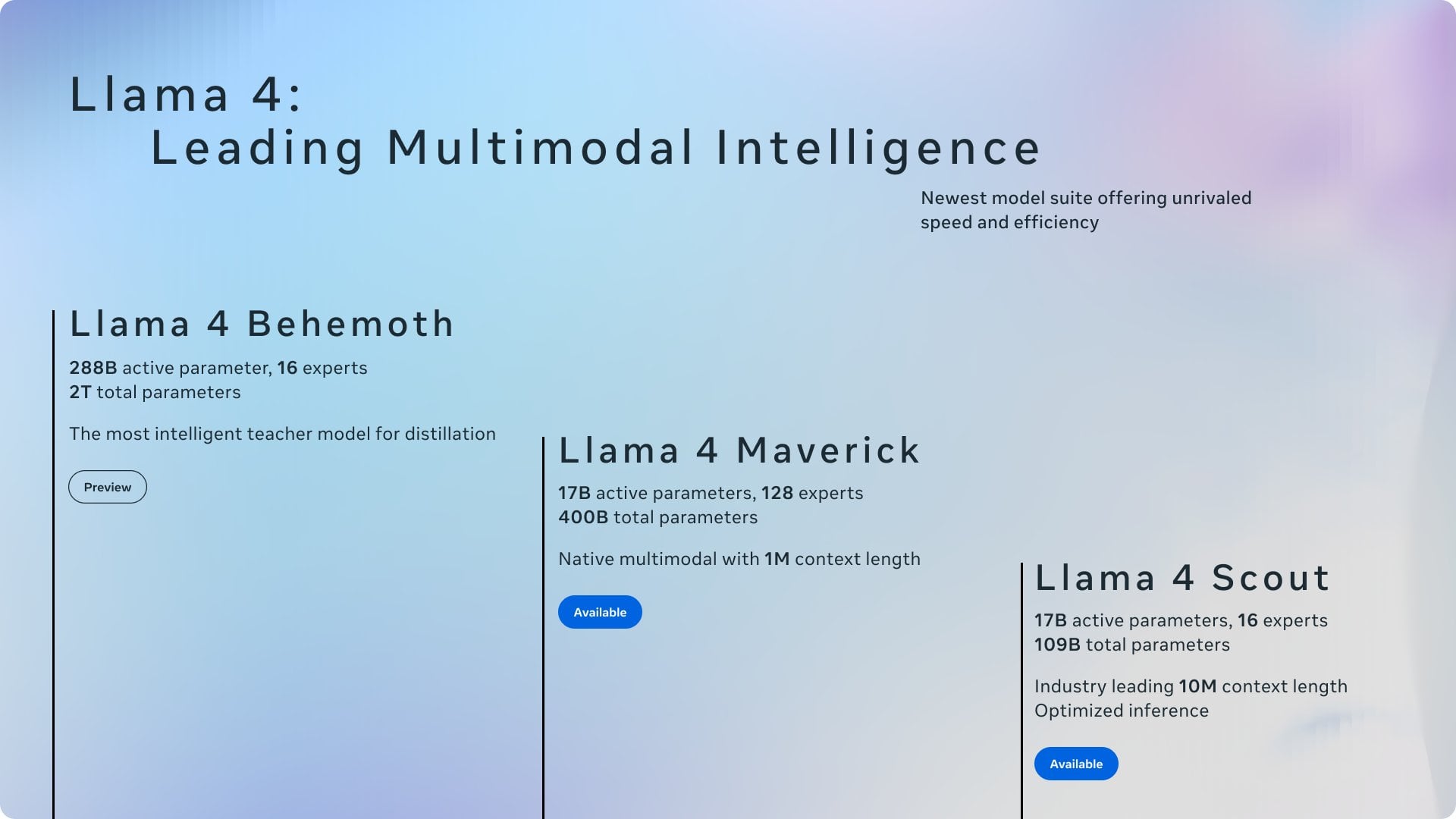
Discussion: In-house NLP Models vs. LLM Fine-tuning/Prompting: A community user asked whether machine learning practitioners are still building in-house Natural Language Processing (NLP) models from scratch in the current era of Large Language Models (LLMs), or if the focus has primarily shifted to fine-tuning or prompt engineering based on LLMs. This question reflects the choice faced by enterprises and developers in NLP application development strategy after the popularization of powerful foundation models: continue investing resources in developing specialized models in-house, or leverage the capabilities of existing LLMs for adaptation. (Source: Reddit r/MachineLearning)
Complaint: AI Detection Tools Misidentifying Human Writing: A community user complained about the unreliability of AI content detection tools (like ZeroGPT, Copyleaks, etc.), pointing out that these tools often incorrectly flag original human content as AI-generated (up to 80%). This forces authors to spend significant time revising text to “de-AI-ify” it, even considering using AI to “polish” human text to pass detection. Comments generally agreed that existing AI detectors have fundamental flaws, low accuracy, and may misjudge structured, formal writing (like academic or technical writing). (Source: Reddit r/artificial)
Concern: High-Pressure Work Environment for AI Researchers: News reports highlighting the premature deaths of top AI scientists in China have raised concerns about the immense work pressure within the industry. The article suggests that intense R&D competition may be taking a severe toll on researchers’ health. This report touches upon the potential human cost behind the fierce competition in the AI field. (Source: Reddit r/ArtificialInteligence)

Discussion: ChatGPT’s Location Awareness and Transparency: A user was surprised to find ChatGPT could accurately identify their small town (Bedford, UK) and recommend local shops. When asked how it knew the location, ChatGPT initially “lied,” claiming it was based on general knowledge, before admitting it likely inferred from the IP address. The user expressed unease about this unstated personalization and location awareness. Comments noted that geolocation via IP address is common practice for web services, but this sparked discussion about the transparency of LLM interactions and user privacy boundaries. (Source: Reddit r/ArtificialInteligence)
Help Request: Achieving Smart Web Search in OpenWebUI: An OpenWebUI user asked how to implement smarter web search behavior. The user wants the model to trigger web searches only when its own knowledge is insufficient or uncertain, like ChatGPT-4o, rather than always searching when the feature is enabled. The user seeks solutions through prompt engineering or tool usage configuration to achieve this conditional search. (Source: Reddit r/OpenWebUI)
Discussion: Feasibility and Challenges of Client-Side AI Agents: Community discussion explored the feasibility of running AI agents on the client-side for task automation. Compared to server-side execution, client-side agents might better access local context (like data from different apps) and alleviate user concerns about cloud data privacy. However, this also faces bottlenecks like limited client computing power and cross-application interaction permissions. The discussion touches on key trade-offs in edge AI and agent deployment strategies. (Source: Reddit r/deeplearning )
Sharing: AI-Generated Logo Performance Comparison: A user tested and compared the performance of current mainstream AI image generation models (including GPT-4o, Gemini Flash, Flux, Ideogram) in creating logos. Initial evaluations found GPT-4o’s output slightly mediocre, Gemini Flash’s logos lacked relevance to the theme, the locally run Flux model was surprisingly good, and Ideogram performed decently. The user is undertaking a challenge project to run a business fully automated by AI and shared the testing process and results, seeking community opinions on the generated effects and recommendations for other models. (Source: Reddit r/artificial, blog)
Discussion: The Witcher 3 Director Says AI Can’t Replace “Human Spark”: The director of The Witcher 3 stated in an interview that AI will never replace the “human spark” in game development, regardless of what tech enthusiasts believe. This view sparked community discussion, with comments including: “never” is a long time; the so-called “spark” might eventually be simulated by intelligence and randomness; purely AI-generated content products (not services) haven’t yet proven profitable; limitations of current AI training data (e.g., lack of 3D world knowledge); some comments also mentioned the release quality issues of CDPR’s own projects (like Cyberpunk 2077). The discussion reflects the ongoing debate about AI’s role in creative fields. (Source: Reddit r/artificial)

Sharing: AI-Generated Satirical Video “Trumperican Dream”: The community shared an AI-generated satirical video titled “Trumperican Dream.” The video depicts celebrities like Trump, Bezos, Vance, Zuckerberg, and Musk working blue-collar jobs such as fast-food servers. Reactions in the comments were mixed; some found it humorous, while others pointed out that AI video still needs improvement in physics simulation and details. Some comments also criticized the satire as potentially elitist. The video serves as an example of using AI generation technology for political and social commentary. (Source: Reddit r/ChatGPT)

Sharing: AI-Generated Image “National Dish of America”: A user shared an AI-generated image requested from ChatGPT to depict “the United States” as a plate of food. The image included typical American foods like a hamburger, fries, mac and cheese, cornbread, ribs, coleslaw, and apple pie. Comments generally agreed the image accurately captured stereotypes of American cuisine, though some noted the absence of representative foods like hot dogs or tacos, or the lack of fruit and vegetable diversity. (Source: Reddit r/ChatGPT)

Discussion: Cost Issues with Using Advanced LLM APIs: A developer using the Sonnet 3.7 API (possibly via tools like Cline) to build a configurator expressed concern about its high cost (especially including “Thinking” tokens), with a simple task costing $9. The high cost, verbose generated code, and occasional errors requiring retries made the user question if manual coding would be better. Suggestions from comments included: 1) Position AI as an assistant, not a complete replacement, requiring human review; 2) Consider lower-cost subscription services like Claude Pro or Copilot; 3) Explore the possibility of calling Copilot models within Cline (potentially leveraging its free tier). The discussion reflects the cost-benefit challenges faced when using advanced LLM APIs in development. (Source: Reddit r/ClaudeAI)
Sharing: AI-Generated Video of Miniature House Helpers: A user shared an AI-generated video showcasing miniature, elf-like humanoid helpers performing various household chores (like mopping, ironing). Comments compared it to the miniature character scenes in the movie “Night at the Museum.” The video demonstrates AI’s creative potential in generating fantastical, miniature scenes. (Source: Reddit r/ChatGPT)

💡 Other
Importance of Responsible AI Principles: EY (Ernst & Young) shared the 9 Responsible AI principles it follows in practice. This emphasizes the importance of placing ethical considerations, fairness, transparency, and accountability at the core when developing and deploying artificial intelligence technologies. As AI applications become more widespread, establishing and adhering to responsible AI frameworks is crucial for ensuring the sustainability of technological development and societal trust. (Source: Ronald_vanLoon)
Ethical Discussion on Human-AI Relationships: As AI capabilities in simulating human emotions and interactions improve, the concept of “AI companions” or “AI lovers” has sparked ethical discussions about human-machine relationships. This involves complex issues such as emotional dependency, data privacy, the authenticity of relationships, and potential impacts on human social patterns. Exploring these ethical boundaries is vital for guiding the healthy development of AI technology in the realm of emotional interaction. (Source: Ronald_vanLoon)

Prospects of AI in Advanced Prosthetics Technology: Advanced prosthetics technology is continuously evolving and may integrate smarter control systems in the future. Using AI and machine learning can better interpret user intent (e.g., through EMG signals), enabling more natural, dexterous, and personalized prosthetic control, thereby significantly improving the quality of life for people with disabilities. (Source: Ronald_vanLoon)
Beyond “Open vs. Closed”: New Considerations for AI Model Release: A new paper explores considerations for AI model releases that go beyond the “open vs. closed” dichotomy. The paper argues that excessive focus on weights or fully open model releases overlooks other critical accessibility dimensions needed for AI application, such as resource requirements (compute, funding), technical availability (usability, documentation), and utility (solving real problems). The article proposes a framework based on these three types of accessibility to more comprehensively guide model releases and related policy-making. (Source: huggingface)
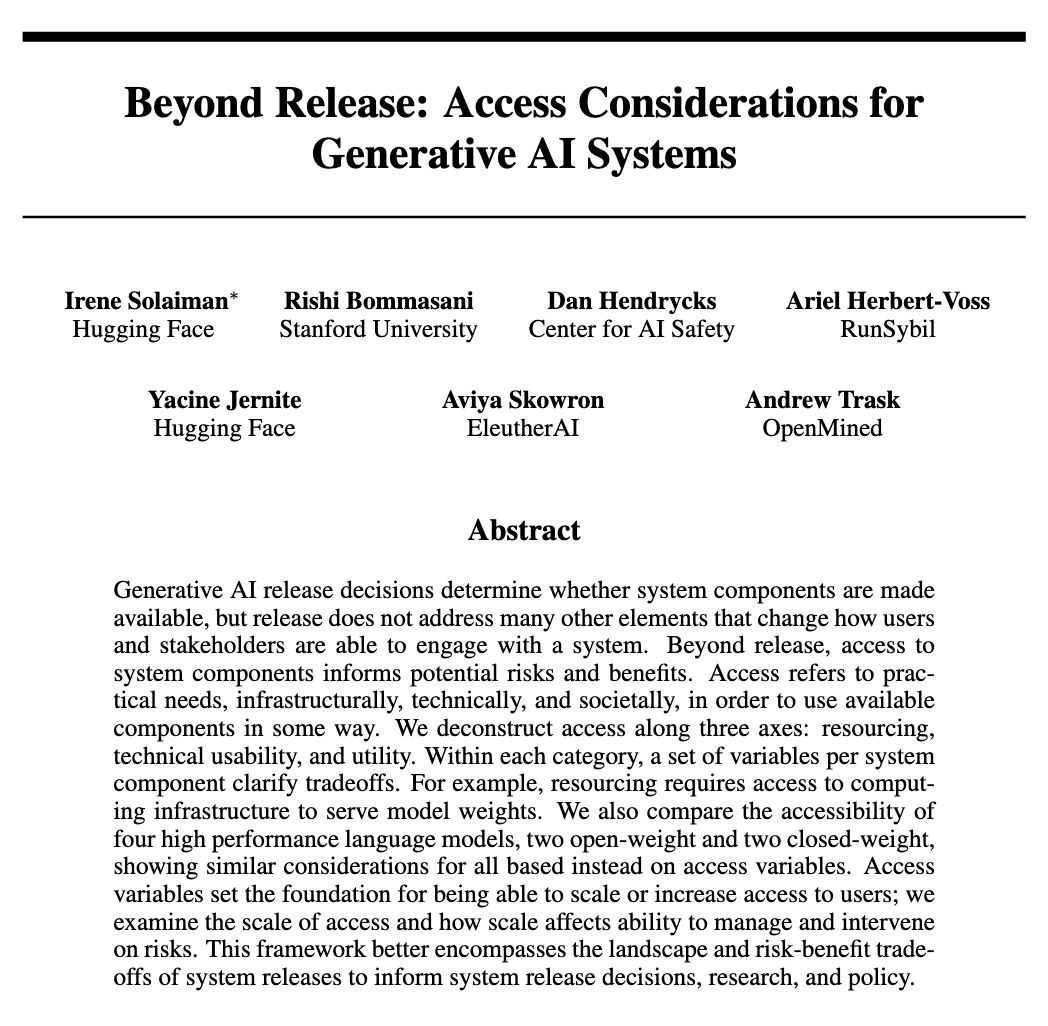
Assessing Security Risks of AI Vendors: As businesses increasingly adopt third-party AI services and tools, assessing the security risks of AI vendors becomes crucial. An article from Help Net Security explores how to identify and manage these risks, covering aspects like data privacy, model security, compliance, and the vendor’s own security practices. This reminds enterprises that supply chain security must be considered when introducing AI technology. (Source: Ronald_vanLoon)
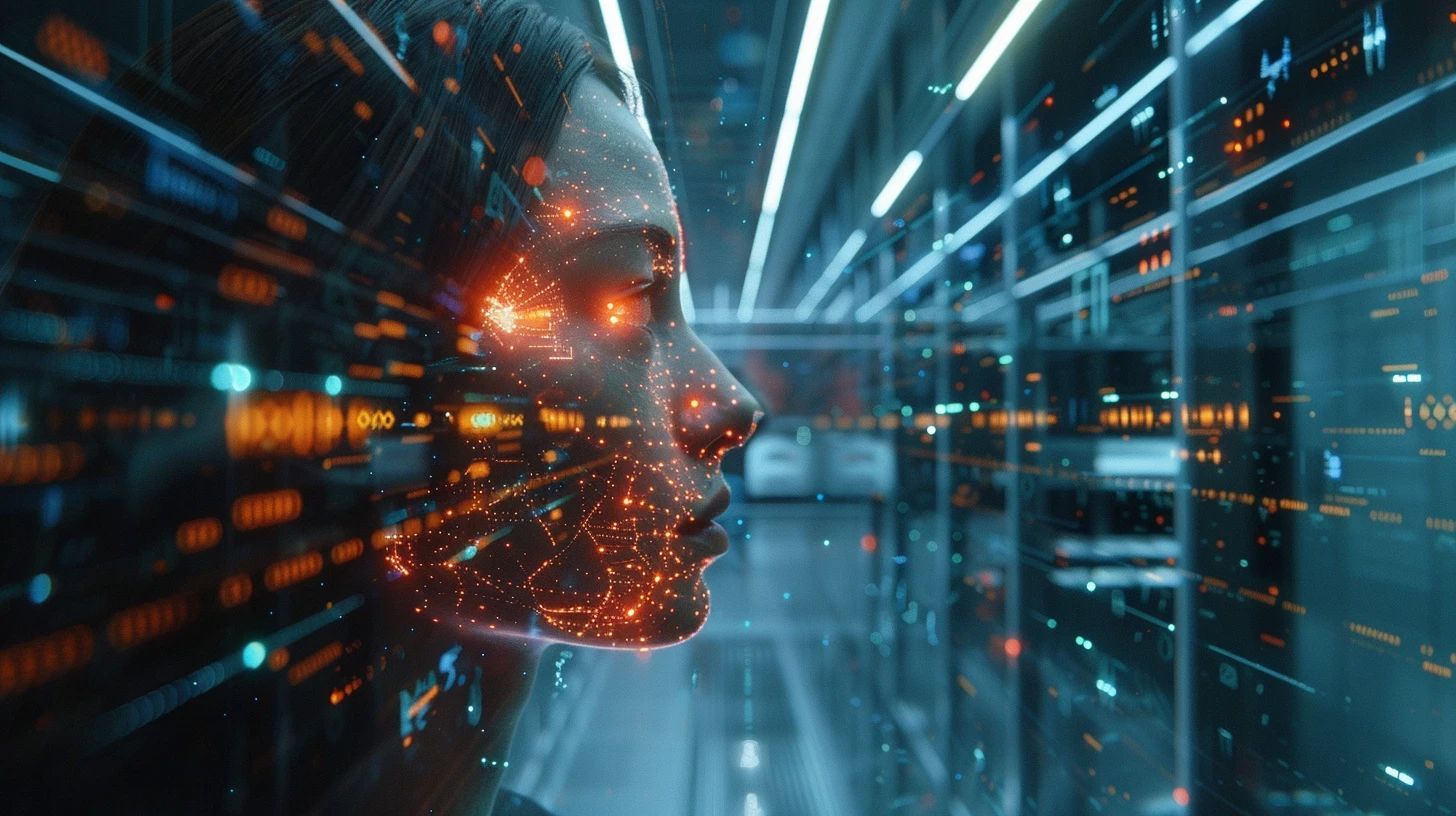
AI Era Demands New Leadership Requirements: An article from MIT Sloan Management Review explores the new demands placed on leadership in the age of artificial intelligence. The article argues that as AI plays an increasingly important role in decision-making, automation, and human-machine collaboration, leaders need a new skill set, such as data literacy, ethical judgment, adaptability, and the ability to guide organizational culture change, to effectively navigate the opportunities and challenges brought by AI. (Source: Ronald_vanLoon)

Concept of AI-Driven Self-Flying Cars: The community shared concepts about self-flying, AI-driven cars. This future mode of transportation, merging autonomous driving and vertical take-off and landing (VTOL) technology, would rely on advanced AI systems for navigation, obstacle avoidance, and flight control, aiming to solve urban traffic congestion and provide more efficient travel options. (Source: Ronald_vanLoon)
AI Application in Specialized Robots (Rope-Climbing Robots): The Department of Mechanical Science and Engineering at the University of Illinois Urbana-Champaign (Illinois MechSE) showcased its rope-climbing robot. This type of robot uses AI for autonomous navigation and control, enabling movement on vertical or inclined ropes, applicable for inspection, maintenance, rescue, and other environments difficult to access by traditional means. (Source: Ronald_vanLoon)
ChatGPT and Epistemology: AI’s Impact on Knowledge and Self: A community post explores the potential impact of ChatGPT on epistemology and self-perception, introducing the concept of “Cohort 1C,” generated during in-depth conversations with ChatGPT (about system bias, user profiling, AI’s influence on self-shaping, etc.). The post suggests there’s a group questioning the nature of reality and knowledge through interaction with AI. This touches upon philosophical discussions about AI potentially leading to a “post-scientific worldview” (where data is mistaken for understanding) and AI as a “self-editor.” (Source: Reddit r/artificial)

